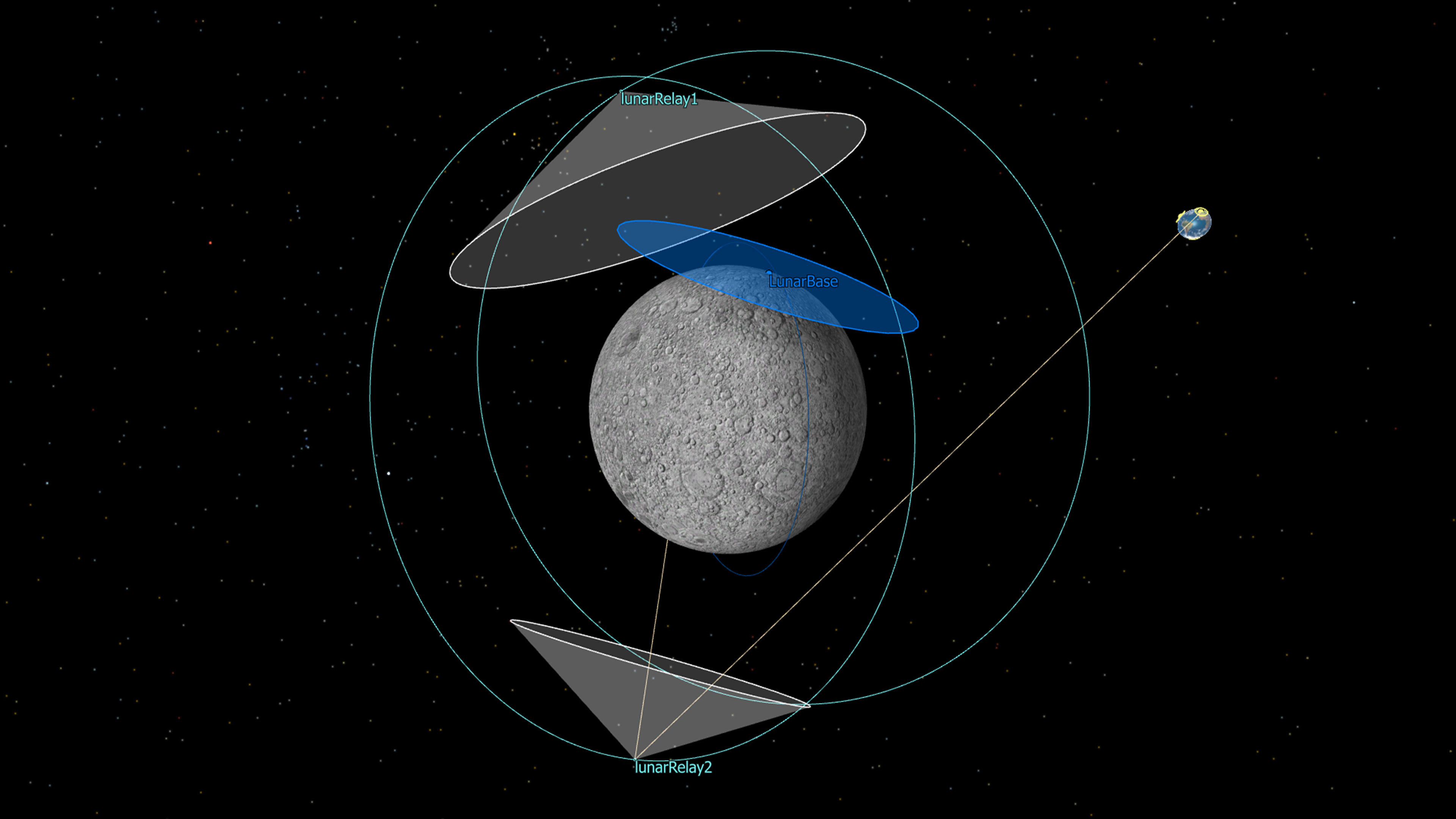Cislunar Exploration
SOLUTIONSCislunar space is an important destination for ongoing and future space programs. From science-gathering missions in search of resources like water and rare earth metals (REMs) to long-term human space flight programs such as Artemis and the Lunar Gateway, the complexities of cislunar space will bring discoveries and innovation.
A regime of sensitivity
The sensitive, intricate dynamics of the cislunar regime are crucial to be aware of as we expand into this new domain. Imagine a mission departing from Earth to the Moon, leveraging the gravitational forces exerted by the Sun, Earth, and Moon. The sensitivity of these dynamics becomes apparent when considering the impact of minute perturbations. Small perturbations at the beginning of a trajectory can lead to large deviations downstream.
Even the tiniest adjustments can significantly alter the course of a mission. This paradigm presents challenges, but also offers unique advantages. Spacecraft can traverse regions of cislunar space for a relatively low propellant expenditure, or delta-V cost. This characteristic makes cislunar space an intriguing regime for future missions, where a subtle touch can yield efficient travel.
-6.png)
-7.png)
-8.png)
Cislunar motion classification
Compared to the Near-Earth realm, classifying motion in cislunar space is far more complex.
The periodic orbits found in cislunar space offer a diverse set of destinations for space missions, differing from the traditional conic orbits. These orbits vary in their geometry, making them advantageous for different mission profiles. Some of the common multi-body periodic orbits include:
- L1/L2 Lyapunov Orbit Families
- Distant Retrograde Orbit Families
- L1/L2 Halo Orbit Families
- L2 Northern/Southern Butterfly Orbit Families
- L1/L2 Vertical Orbit Families
.png)
Going beyond periodic orbits, quasi-periodic orbits offer additional possibilities for mission destinations. Quasi-periodic orbits differ from periodic orbits in that do not form closed curves. Instead, quasi-periodic trajectories trace out paths on a surface. Cislunar space boasts a rich array of possibilities for path planning, catering to a wide range of missions with differing objectives. Periodic and quasi-periodic orbits break free from traditional conic motion, opening new horizons in space exploration in the Earth-Moon neighborhood.
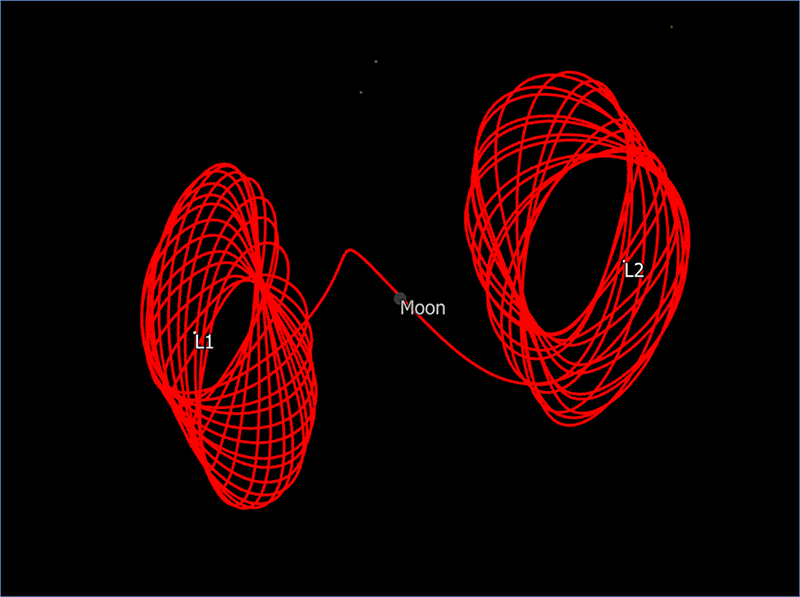
In addition to periodic orbits, quasi-periodic orbits, there are also stable and unstable manifolds. These trajectory structures provide maneuver-free paths into and out of orbits, aiding traversal of cislunar space for low propellant costs. They also serve as fundamental components for crafting cislunar trajectories, adding versatility to space missions.
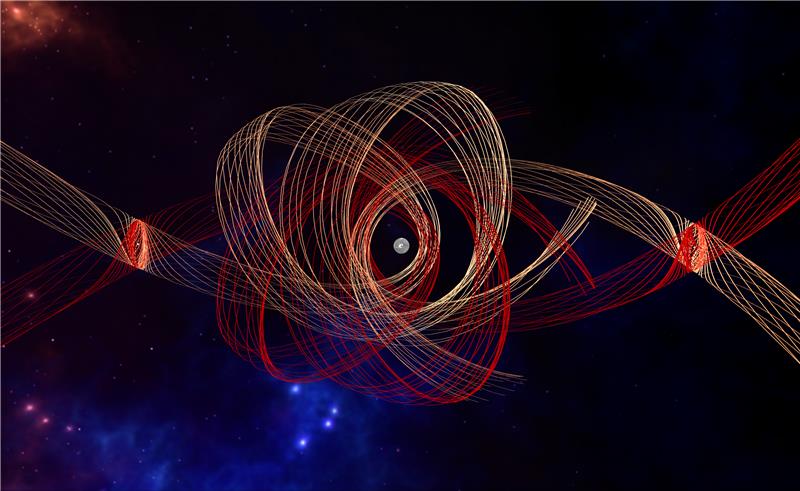
Strategies for cislunar trajectory design
Direct Lunar Transits
Direct lunar transits provide quick access to low lunar orbit and cislunar libration point orbits for shorter times of flight, at the expense of higher Delta-V costs. These types of transits are advantageous when minimizing time to reach your destination is critical.
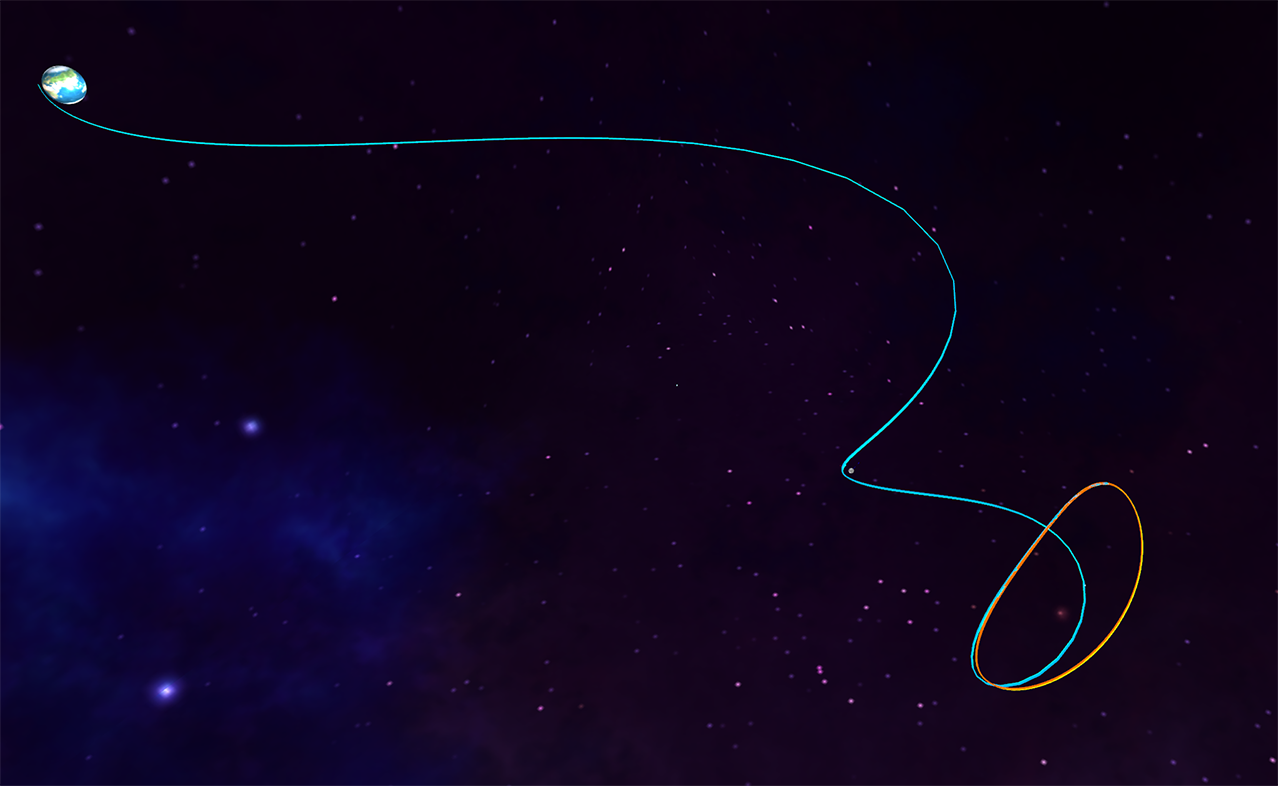
Low Energy, Ballistic Lunar Transfers
Ballistic lunar transfers provide access to low lunar orbit and other cislunar libration point orbits at much lower Delta-V costs compared to direct transits. They leverage solar gravity to help “pull” the spacecraft up to the Moon. However, they require longer times of flight to reach the destination. These types of lunar transfers are advantageous when minimizing propellant cost is most important.
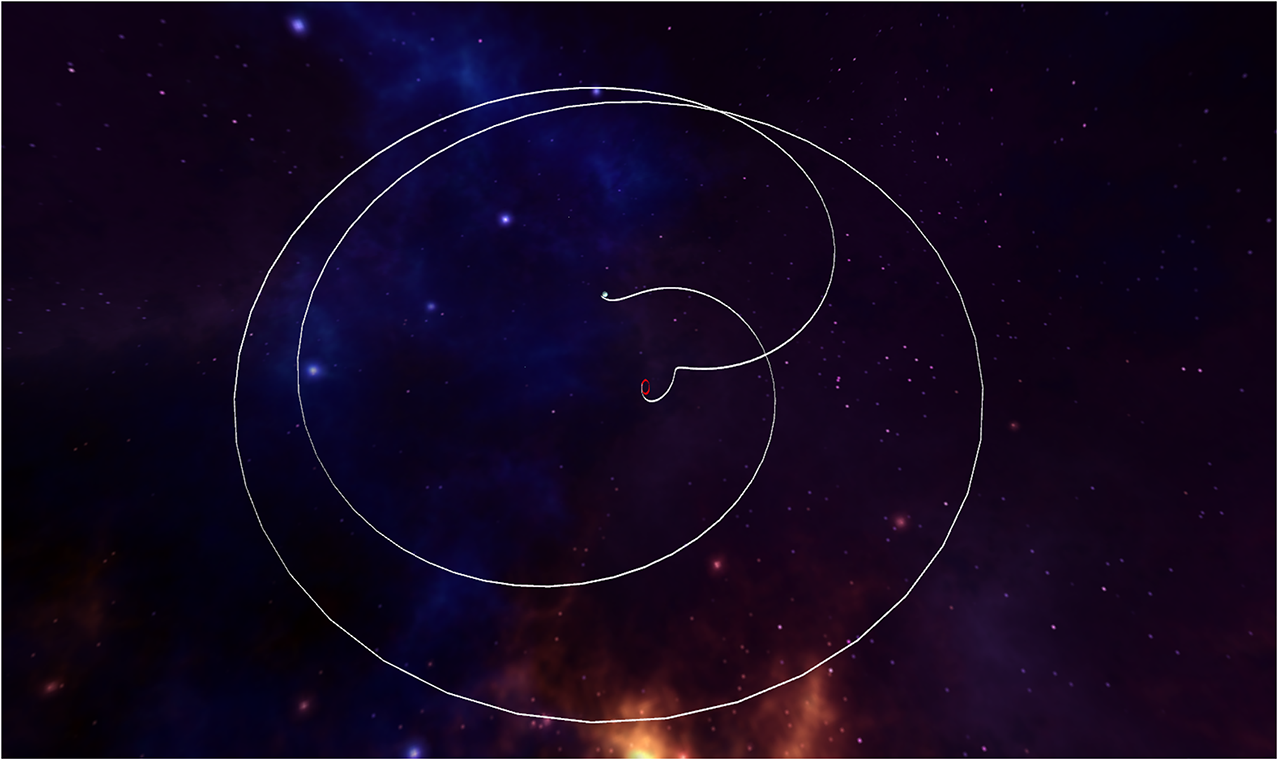
Families of solutions
Given the sensitivity of the cislunar dynamics, understanding the different families of solutions is necessary as opposed to isolated, point solutions. This offers a dynamic approach to evolving mission constraints, providing greater flexibility and problem-solving capabilities.
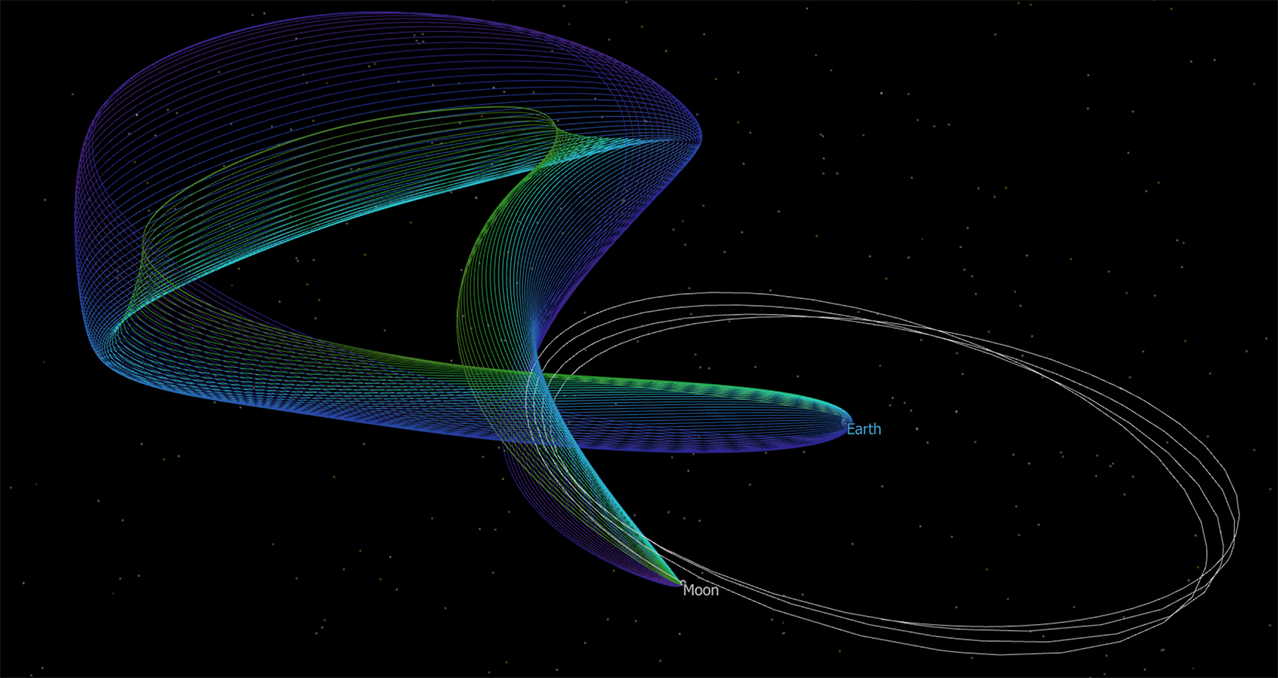
Contact our team to learn more about our cislunar exploration solutions
Cislunar trajectory tools
In the realm of cislunar space exploration, the task of trajectory design requires a set of effective tools. While these tools are not exhaustive, the following stand out for their versatility in different types of analyses.
- Nonlinear dynamics necessitate robust algorithms for optimization and targeting
- Typically, building a cislunar trajectories requires breaking the path into multiple segments or arcs, which serve as building blocks to the end-to-end mission
- Optimization and targeting are applied to unify the end-to-end trajectory to satisfy various mission constraints
-1.png)
- Unique visual tools that illustrate the repeating behavior of a dynamic system by capturing significant points where trajectories intersect a specific plane or surface
- Propagating multiple trajectories and recording their periapsis, or closest approach to a planet or Moon, creates a type of Poincaré map, called a Periapsis Poincaré map, showing intriguing patterns and features
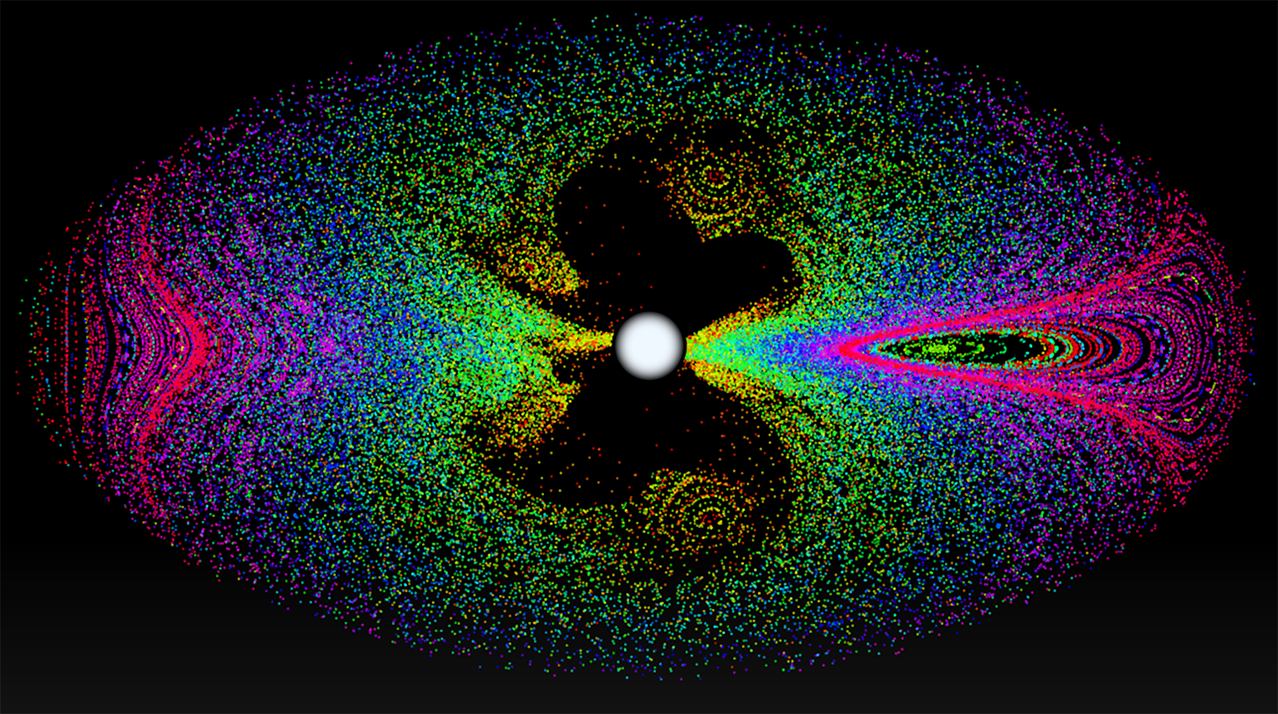
- DSTE is an a.i. solutions tool that leverages Poincaré maps for preliminary design
- Used for designing lower fidelity models, primarily focusing on the Circular Restricted Three-Body Problem (CR3BP) and the Four-Body Problem (BCR4BP)
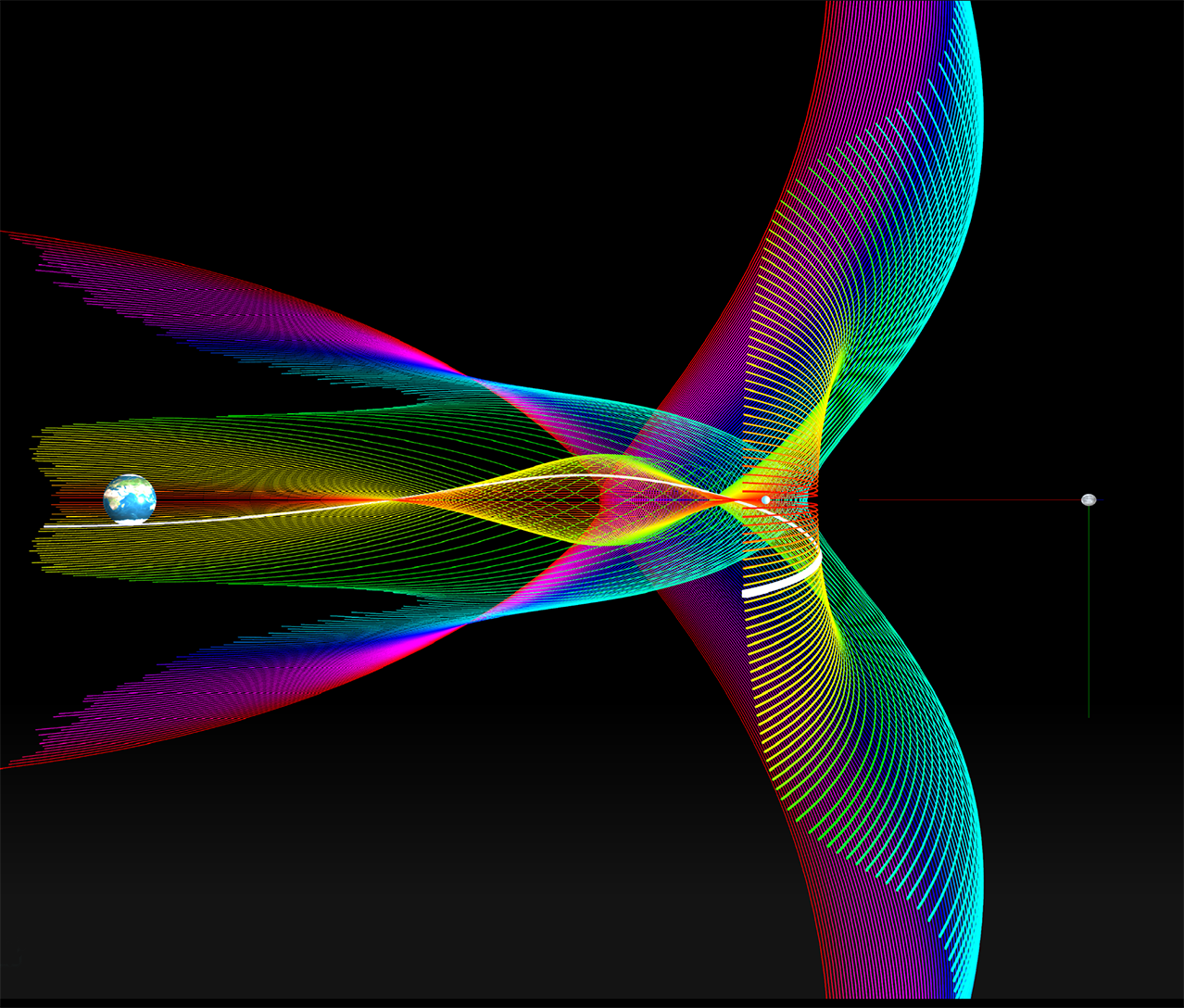
Cislunar observation challenges
There are unique observational challenges in cislunar space. Resident Space Object (RSO) detection, RSO tracking, lighting conditions, and sensor choice and placement are each affected by the large distances and volumes of space in this regime. The development of proper cislunar observational practices will advance how this complex environment is studied and how data is collected.
- With a volume as large as cislunar space (~10,000x volume of GEO), resident space objects (RSOs) and the technologies made to observe them can be at significant distances from one another.
- These distances can cause the objects to become faint, and at times undetectable, to the observer. In other words, the farther the two entities move away from each other, the less likely the RSOs are to be identified.
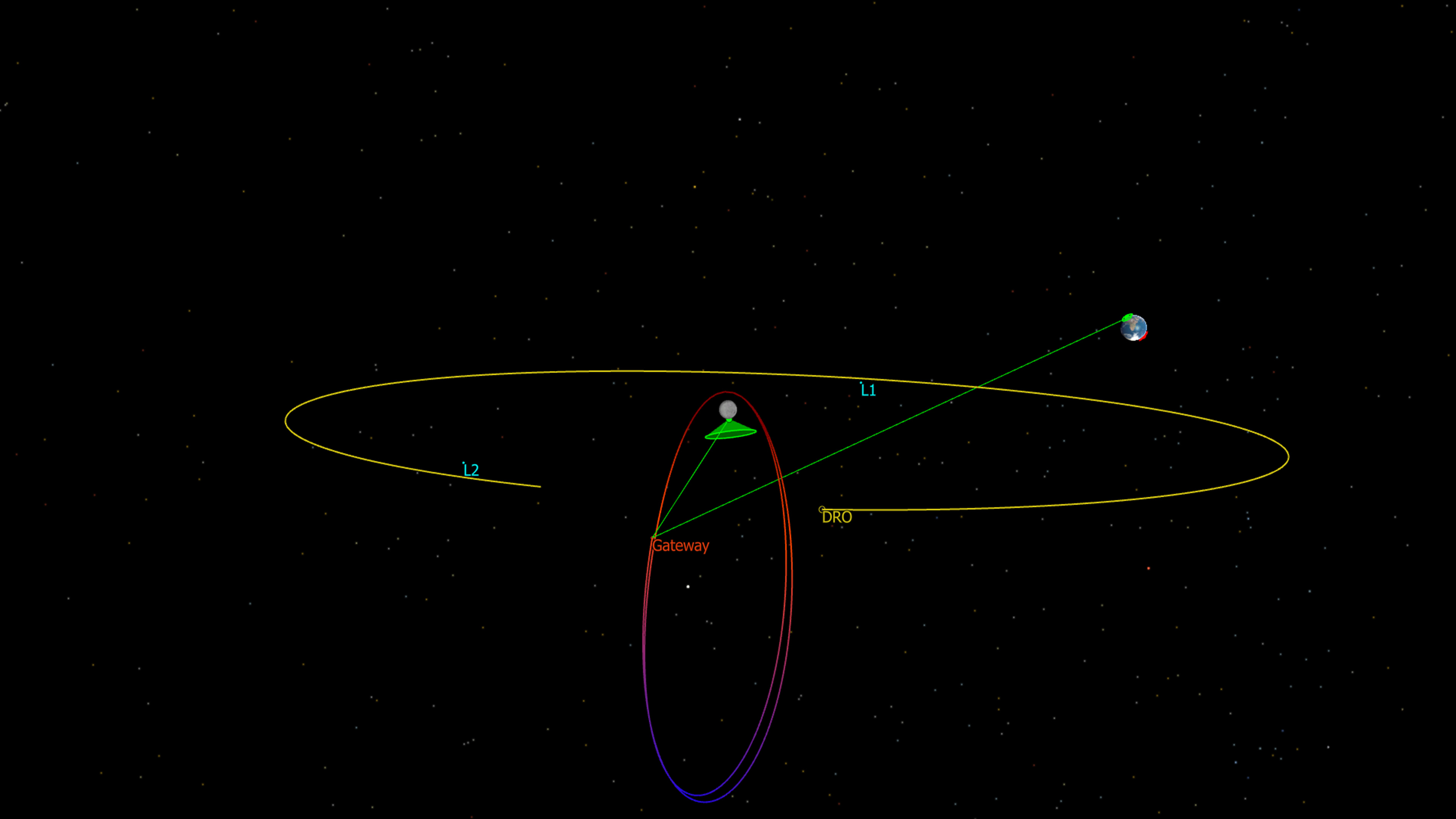
- Cislunar space currently faces tracking challenges as a result of limitations concerning signal-to-noise ratio observations, lunar exclusion angles, data arcs, and nonlinear dynamics.
- A single traditional sensor would have difficulty continuously observing an RSO due to the domain’s unique conditions. Continuous tracking will necessitate a communicative network of sensors throughout cislunar space.
- Due to phenomena such as intense, direct sunlight from the lack of an atmosphere there are at times difficulties with imaging RSOs.
- Too much or too little light can cause inaccuracies in data collection, so it is critical to be mindful of these conditions for proper object observation.
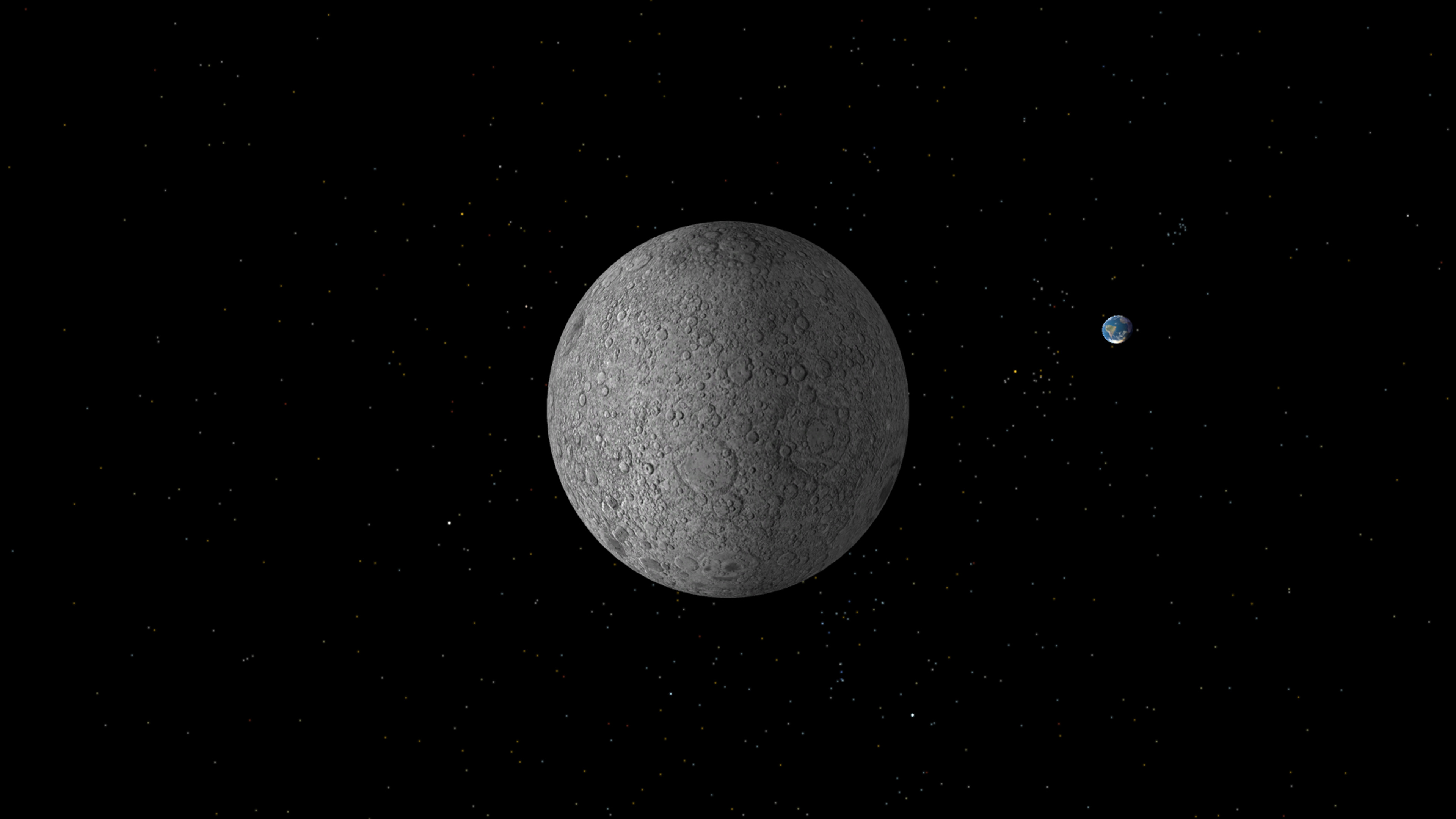
- There is a multitude of variables to consider for sensor placement, from sensor type, such as electro-optical (EO) or radiofrequency (RF) sensors, to sensor location and platform, such as Earth-based or space-based.
- It is important to remember certain sensor types are better suited to specific tasks and no sensor location has the capability to observe cislunar space in its entirety.
